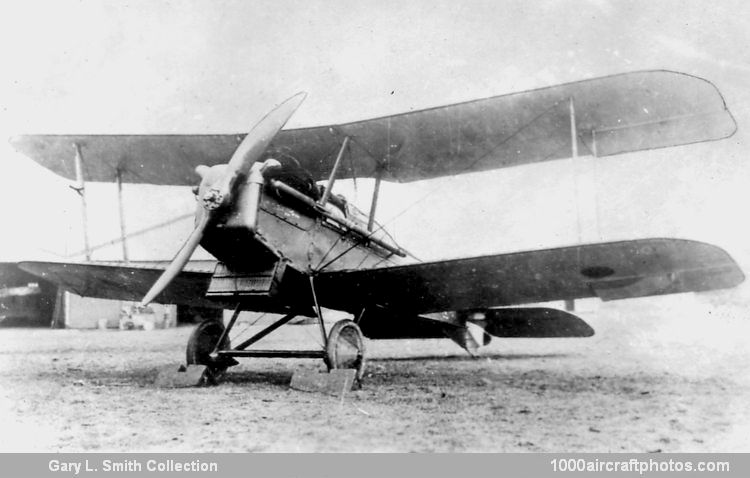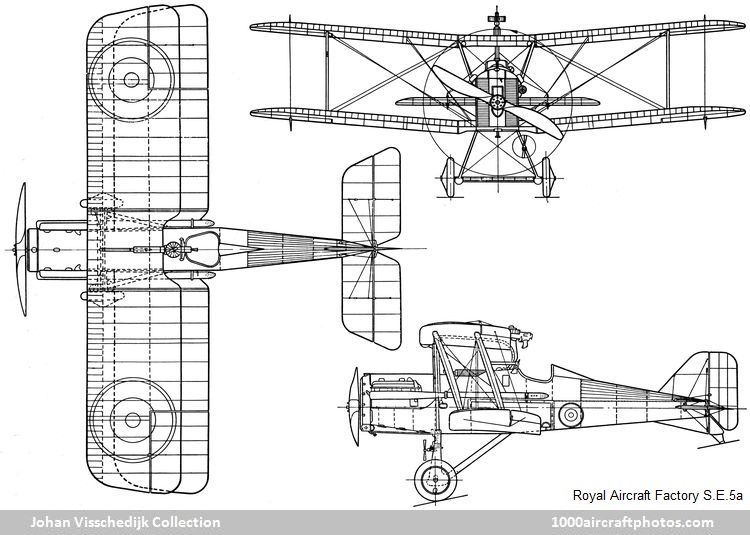12/15/2017. Remarks by Johan Visschedijk: "The third prototype of the S.E.5 flew at Farnborough on January 12, 1917 powered by a 200 hp geared Hispano-Suiza 8B eight-cylinder liquid-cooled V-engine, but otherwise similar to the 150 hp engined earlier prototypes. While production deliveries of the 200 hp engine were awaited, airframe modifications were introduced in the light of early experience with the first production batch of S.E.5s.
In particular, the wing rear spars were shortened at the tips to provide greater strength, this serving to blunt the previously raked tips and reduce overall span by 15.5 in (39.4 cm). At the same time, lateral control was improved by shortening the levers on the ailerons. With a small Avro-type wind-screen in place of the S.E.5's voluminous structure, a small fabric covered head fairing behind the cockpit, the blunt wings and the standard Vickers + Lewis gun armament, the version with 200 hp engine became the subject of large-scale production as the S.E.5a, starting with part of the second batch S.E.5s already ordered from the RAF. Two hundred more were built at Farnborough itself and, in addition, by the time the war came to an end in November 1918, some 5,125 S.E.5a's had been built by five companies in less than 18 months: Austin 1,550, Blériot-Spad 560, Martinsyde 400, Vickers 2,215 and Wolseley 400.
Production of the 200 hp Hispano (in several sub-variants, and including license-production by Wolseley as the W.4B Adder I, II and III) failed to keep pace with this prodigious output, and numerous operational difficulties with the engine enhanced the problem. Consequently, many S.E.5a's were fitted (without change of designation) with the 200 hp direct-drive Wolseley W.4A Viper, a derivative of the French engine. At least six S.E.5a's were flown with the 200 hp Sunbeam Arab I (geared) or Arab II (direct drive) eight-cylinder liquid-cooled engine in trials at Farnborough, and some production aircraft received high-compression versions of the French-built Hispano-Suiza engine, increasing maximum output to 220 hp.
Twenty-two squadrons of the RFC and the US Air Service were flying the S.E.5a by the time of the Armistice, but this brought an end to planned large-scale production by Curtiss in the US when only one of 1,000 on order had been completed (in addition to 56 assembled from British components). Service use continued on a small scale for only a short time after the end of the war, in Australia, Canada and South Africa as well as with the RAF.
Some S.E.5a's were used for experimental purposes, both during and after the war. The pictured aircraft was experimentally fitted with an underslung radiator instead of the usual frontal surface, the nose was covered in by a blunt cowling."

